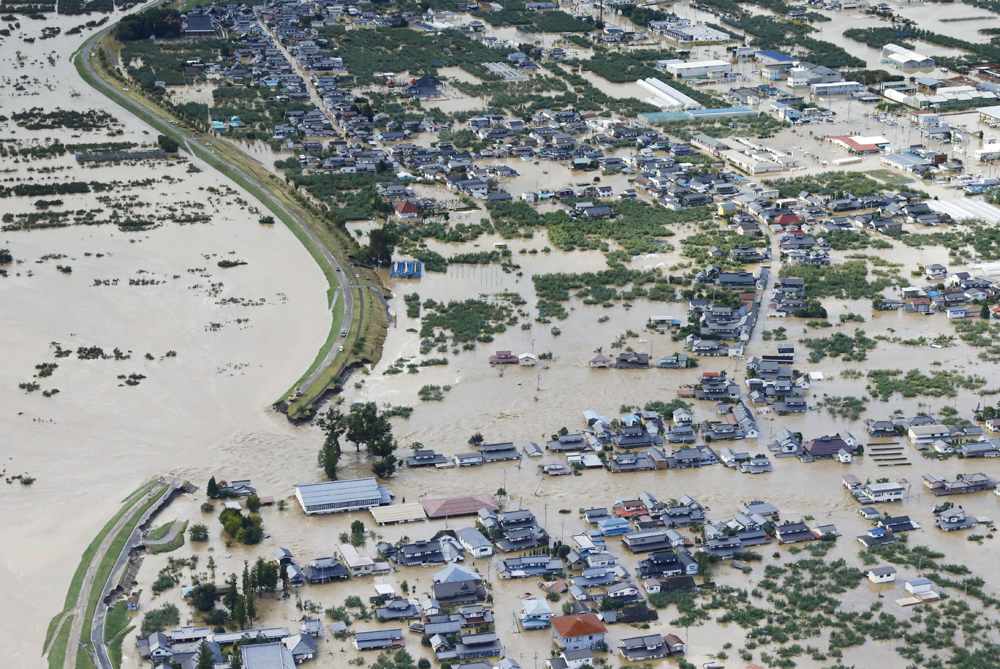Global catastrophe risk modeller AIR Worldwide has provided an industry insured loss estimate of between USD 8 billion (JPY 865bn) and USD 16 billion (JPY 1,730bn) from Typhoon Hagibis, which made landfall in Japan on October 12th, 2019.

Image from Kyodo agency (via Japan Today)
According to AIR, typhoon Hagibis made landfall along Japan’s east coast as an equivalent category 1 hurricane on the evening of Saturday the 12th of October, with 1-minute sustained wind speeds of around 145 km/h (90mp/h).
The storm carried high winds and delivered record-breaking precipitation to a large portion of Honshu from Mie Prefecture in the west to Iwate in the north. AIR notes that storm surge elevated sea levels by more than 1 meter above mean sea level along parts of the Japanese coastline.
AIR, a Verisk business, has now said that the event could drive insurance and reinsurance industry losses as high as USD 16 billion, adding that more than 50% of the losses are a result of inland flooding.
At the mid-point of AIR’s insured loss estimate range, the industry can expect losses of approximately USD 12 billion, which is in line with some analysts’ views that Hagibis could cost more than Typhoon Faxai, which has been estimated to be as high as USD 9 billion.
Insured losses of USD 9 billion for Faxia and USD 12 billion for Hagibis would see the two events become more costly than the combined impacts of Jebi and Trami in 2018, which currently sits at around USD 18 billion.
As noted by AIR, more than half of the insured losses from Hagibis are a result of inland flooding. During the event, the Japan Meteorological Agency issued its highest level (level 5) special warning for heavy rain, which was unsurprisingly followed by unprecedented levels of rainfall. Many parts of the country experienced between 30% and 40% of their annual rainfall in just two days, with over 100 stations breaking daily rainfall records.
According to AIR, some 540 river gauging stations exist on Honshu island, and more than 85 of these exceeded their 100-year return period peak flows, with more than 100 exceeding their historical records.
AIR’s modelled insured loss estimates include insured damage to property (residential, commercial, industrial, agricultural/mutual), structures and their contents, and also extra expenses and debris removal, and automobile from wind, storm surge, and inland flood.
AIR’s modelled insured loss estimates do not include landslide, losses from tornado or earthquake, losses to land, losses to infrastructure, losses to CAR/EAR, marine hull, or marine cargo lines, BI losses, LAE, or demand surge/the increase in the cost of materials.
“Because of the intense rainfall within a short time period, much of the floodwater has a high mud content and includes a large amount of debris; this could potentially increase the costs of repair and cleanup and drive up business interruption losses—especially for commercial and industrial properties.
“In addition, Hagibis impacted some of the same region damaged by Typhoon Faxai a few weeks earlier. Additional damage caused by Hagibis to properties that were damaged by Faxai but were not repaired would further complicate claims settlements,” says AIR.


